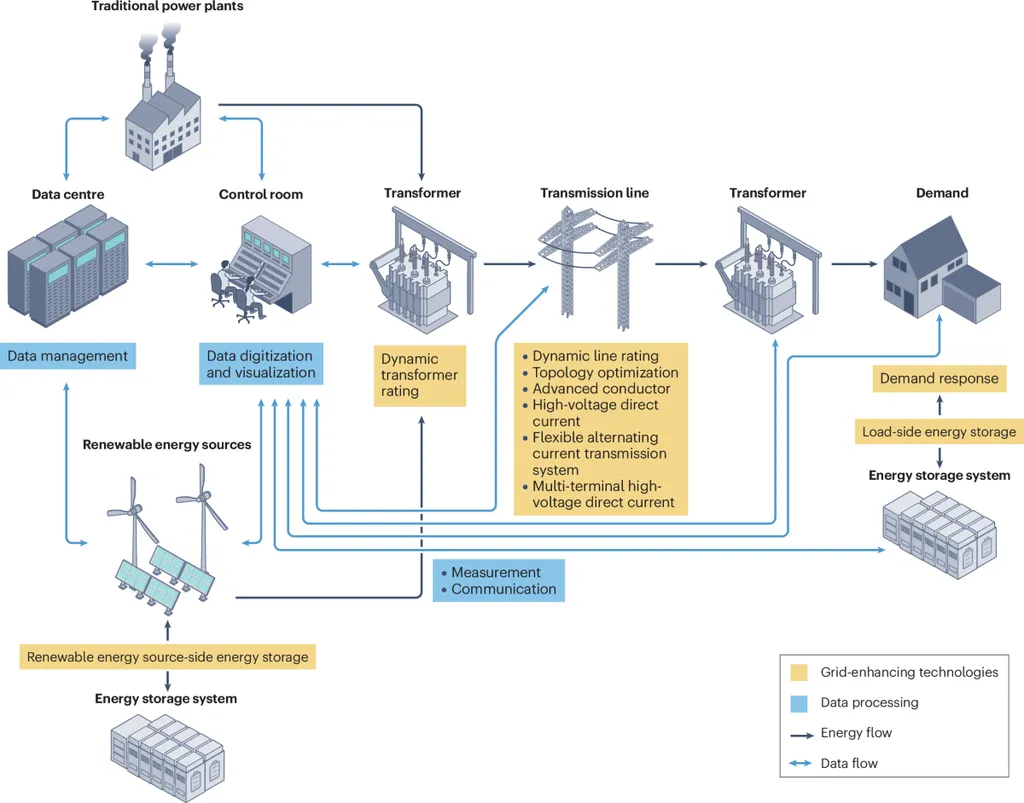In the rapidly evolving energy landscape, the integration of renewable energy sources has brought about significant challenges, particularly in maintaining the stability of power grids. A recent study published in *China Electric Power* offers a promising solution to one of these critical issues: frequency control in regional power grids. The research, led by Jikeng Lin from the College of Electronics and Information Engineering at Tongji University in Shanghai, introduces a novel method that combines model predictive control with stochastic optimization techniques to enhance grid stability.
The volatility and rapid fluctuations of renewable energy generation have made traditional frequency control methods less effective. Lin’s research addresses this problem by proposing a prediction-driven frequency-control framework. This framework treats tie-line power deviations caused by neighboring-area frequency fluctuations as local disturbance variables, effectively decoupling the local frequency-control process from neighboring regions. “By doing this, we can focus on stabilizing the frequency within the regional grid without being overly influenced by external factors,” Lin explains.
One of the key innovations in this research is the development of an online estimation scheme for the system inertia constant. This is achieved through system-parameter identification and an adaptive online kernel density estimation technique. These tools enable the construction of probabilistic prediction models for unit inertia time constants, load demand, renewable power output, and neighboring-area frequency deviations. “Accurate representation of these uncertainties is crucial for effective frequency control,” Lin notes.
Building on these models, the research formulates a stochastic-model-predictive-control-based frequency control optimization model and its fast solution algorithm. The proposed method was validated on a modified IEEE-39-bus system, demonstrating significant improvements over existing strategies. Compared with the deterministic strategy and the strategy that considers only power-disturbance uncertainty, the proposed method improved the mean value of the control performance standard by 14.98 percentage points and 11.38 percentage points, respectively. It also reduced the mean absolute area control error by 5.30 MW and 2.22 MW, respectively.
The implications of this research are substantial for the energy sector. As renewable energy penetration continues to grow, the need for advanced frequency control methods becomes increasingly critical. Lin’s work offers a valuable reference for regional grid frequency control in new-type power systems with high renewable penetration. “This method not only enhances grid stability but also paves the way for more efficient and reliable integration of renewable energy sources,” Lin states.
The study’s findings are particularly relevant for energy professionals and policymakers, as they highlight the potential of advanced control strategies to address the challenges posed by renewable energy integration. By improving frequency control, this research can contribute to a more stable and resilient power grid, ultimately benefiting both energy providers and consumers.
As the energy sector continues to evolve, the need for innovative solutions to grid stability challenges will only grow. Lin’s research represents a significant step forward in this area, offering a promising approach to enhancing the reliability and efficiency of regional power grids. The study’s publication in *China Electric Power* underscores its relevance and potential impact on the global energy landscape.

